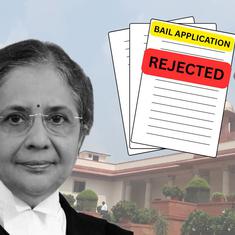Welcome to The India Fix by Shoaib Daniyal. A newsletter on Indian politics (though this week, it intersects quite a bit with global politics).
As always, if you’ve been sent this newsletter and like it, to get it in your inbox every week, sign up here (click on “follow”).
After the Pahalgam terror attack, much of India was expecting a retaliatory attack against Pakistan. Instead, Prime Minister Narendra Modi launched a surgical strike of a political kind. On Wednesday, the Union cabinet decided that caste would be counted as part of the upcoming census.
This is a major U-turn by the Bharatiya Janata Party and Modi. Just a year ago, Modi had denounced those lobbying for a caste census as “urban naxals”. Uttar Pradesh Chief Minister Adityanath, arguably the second-most popular BJP leader after Modi, set the line for opposition to the caste census with the slogan “batenge to katenge” – divided we will get slaughtered.
The graphic imagery refers to a long-held Hindutva belief that demands for caste equity will only end up fracturing Hindu society. The Rashtriya Swayamsevak Sangh backed Adityanath on his call for purported Hindu unity.
Soon Modi echoed Adityanath’s line with his own “ek hai to safe hai” – there is safety in unity. Clearly, the BJP was going hammer and tongs against the Congress party, which has pressed hard for a caste census as part of its social equity focus under the leadership of Rahul Gandhi.
An about turn
That the saffron party has turned on a dime and now sought to take credit for the caste census is a good indicator of just how popular the policy plank is. Clearly the BJP hopes to blunt some of the Dalit and Other Backward Class anger that led to it losing the support of these groups in the last Lok Sabha elections.
But even as the BJP is trying to run off with the Congress’ agenda, the main Opposition party has stepped up its game: it says it will now concentrate on getting the government to remove the 50% cap that has been set on reservations for seats in educational institutions and government jobs.
If it happens, it would cause a political earthquake that could be bigger than even the anti-Mandal agitation of the early 1990s. In 1990, the VP Singh government implemented the Mandal Commission’s recommendations, providing reservations to Other Backward Classes – a vast, varied collection of agricultural and artisanal castes that fall between upper castes and Dalits in the social ladder.
This doubled caste quotas to nearly 50%, drastically shrinking the general category dominated by upper castes. Angry at this, members of the upper castes launched an agitation with a young brahmin student, Rajiv Goswami, even setting himself on fire in Delhi.
This agitation was mirrored by a new politics of OBC assertion, especially in the Hindi belt. Parties such as the Samajwadi and the Rashtriya Janata Dal drew OBC votes away from the upper caste-led Congress with the claim that OBC interests would be better protected by OBC leadership.
Judicial award
Eventually, a political compromise was hammered out – not by politicians but by the Supreme Court of India. In the landmark 1992 Indra Sawhney judgment, the court upheld OBC reservations but also put in place significant caps. Reservations could not extend beyond 50% and the “creamy layer” or well-off OBCs would be excluded from availing of the quota.
Notably, the court did not really explain why it chose the 50% figure. It said that the power of reservations should be “exercised in a fair manner and within reasonable limits” and hence “reservation under Clause (4) shall not exceed 50% of the appointments or posts, barring certain extraordinary situations as explained hereinafter”.
But why was 50% a “reasonable limit” given that Dalits, Adivasis and OBCs constitute around 80% of the Indian population?
Even more confusingly, in 2022 the court allowed this 50% limit to be breached for the Economically Weaker Section quota for poor members of the upper castes. The Indra Sawhney cap was only applicable to caste quotas, it held.
That such a major policy decision was taken by the court and not backed up in the political sphere meant the 50% cap was always on weak ground. The court in fact struck a blow of its own by upholding the Economically Weaker Section quota.
Caste society
India is the only country in the world where affirmative action quotas extend to the majority of the population. With the Economically Weaker Section quota in place, it now stands at almost 60%.
Part of this flows from just how unique Indian society is. For example, the endogamy that underpins it, with the idea that marriages must only take place within a caste or even a subcaste, has shocked geneticists. Famously, David Reich, a geneticist at Harvard University, quipped that while the Chinese are a truly large population, Indians are actually a “large number of small populations”.
Given this hermetically sealed social structure, the vast majority of Indian castes do not feel they can ever compete with the savarna castes that have dominated the social system for the past two millennia.
Add to this is the fact that the Indian economy has been terrible at creating employment. In fact, studies show that there is little relationship at all between economic growth and employment growth in India.
“What this means is that far from employment growing faster when GDP grows faster, years of fast GDP growth have, on the contrary, tended to be years of slow employment growth,” the State of Working India report 2023 said.
Both these factors mean that almost everyone in India thinks they need state-backed quotas to access wealth and education. Hence, the massive support for removing the quota cap.
Modi has bent to Rahul Gandhi on the caste census. Will he now also buckle on the 50% limit?










